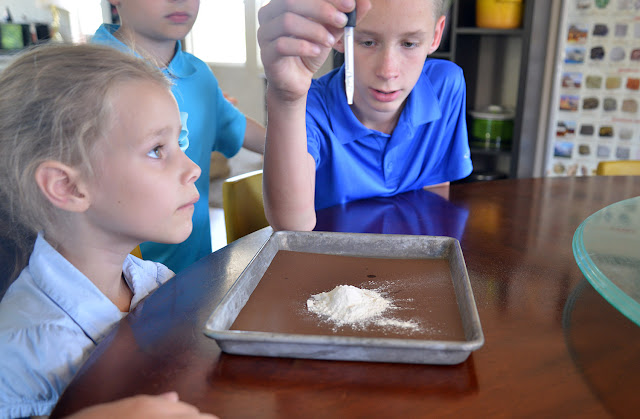Somehow in all my years of studying geology, I never understood that clay and silt and sand are simply names for materials composed of different sizes of sediment! We collected samples of each type and sorted them onto a plate, and then looked at them under the microscope.
Here's what sand looked like. Cool, huh? Like teeny pebbles. Which, of course, it is!
We also looked at how weathering and erosion affects different sediments.
You can see, as we dropped water on our "mountain," the water wore away at the slopes, and formed river channels where it "preferred" to flow. You can also see the deposition of sediment at the bottom of the "mountain."
Wind plays a part in weathering and erosion as well.
Eventually, the mountain is all worn away and the sediment has been deposited throughout the flood plain.
We looked at different sizes of sediment too. The water, obviously, had less of an effect on large "boulders" than it did on smaller sediments.
After flooding the sediments, they mixed and settled. Then we allowed the water to evaporate for a few days, and when it was gone, we had a "sedimentary rock" composed of the old sediment.
More sedimentary rock activities—here.










No comments:
Post a Comment